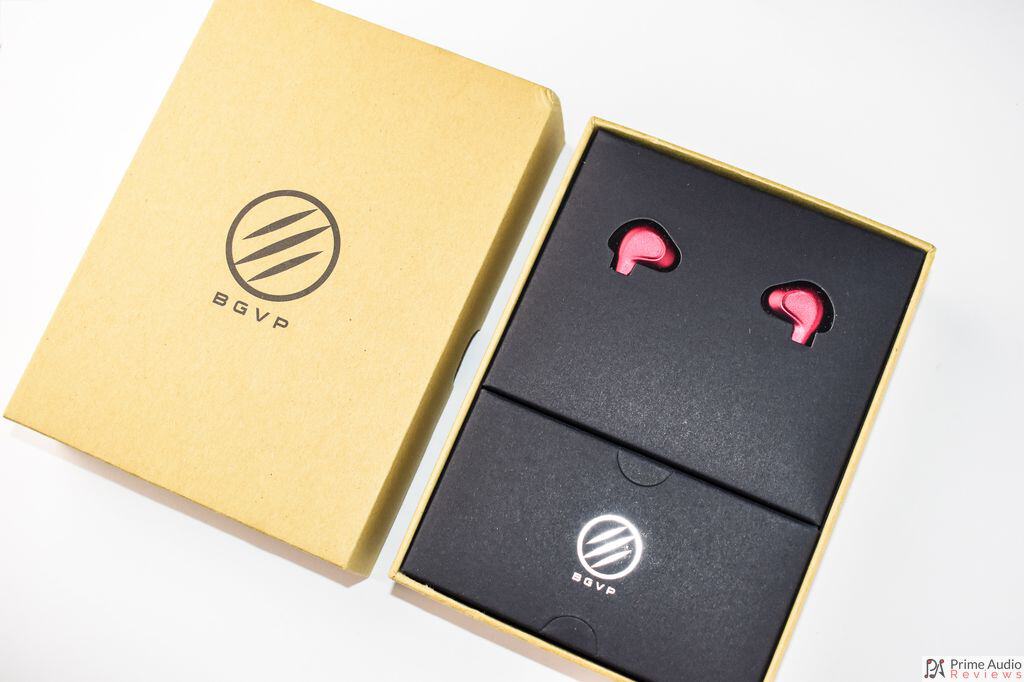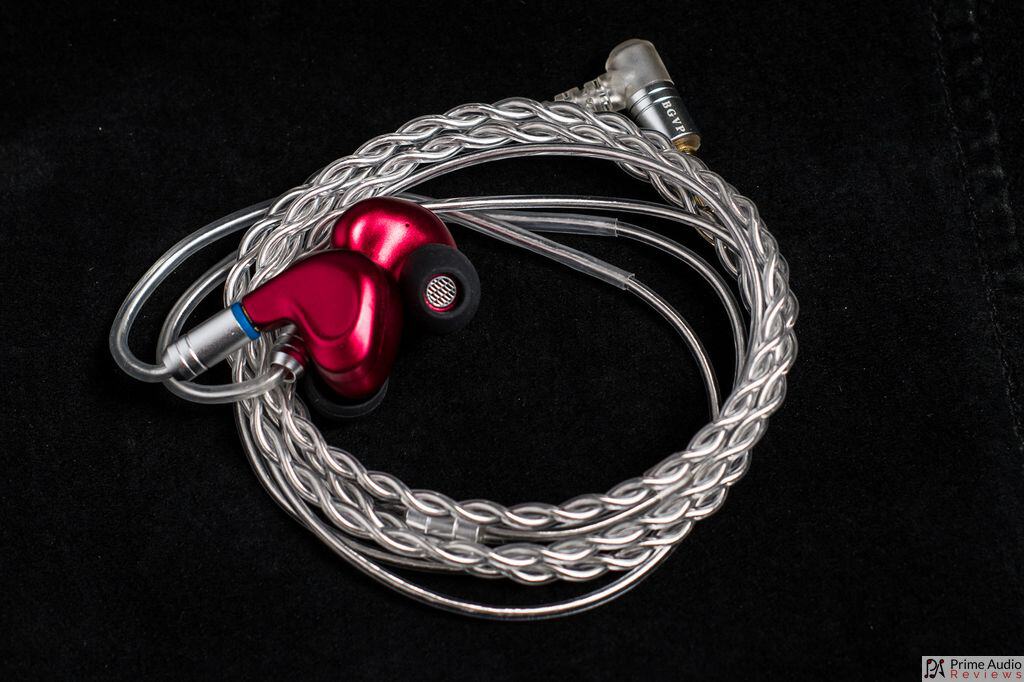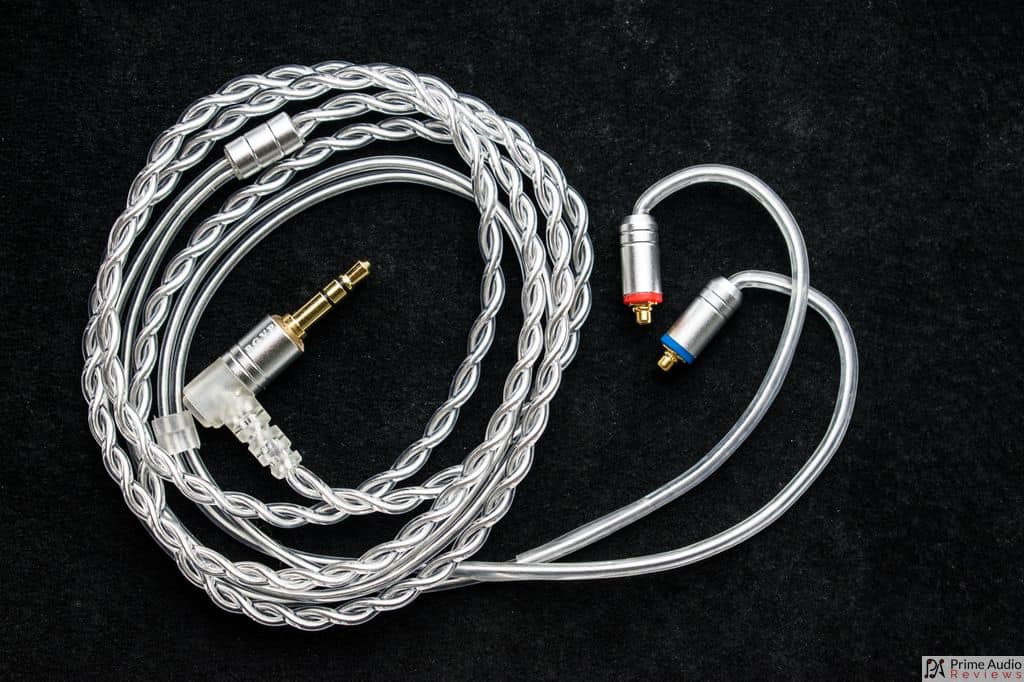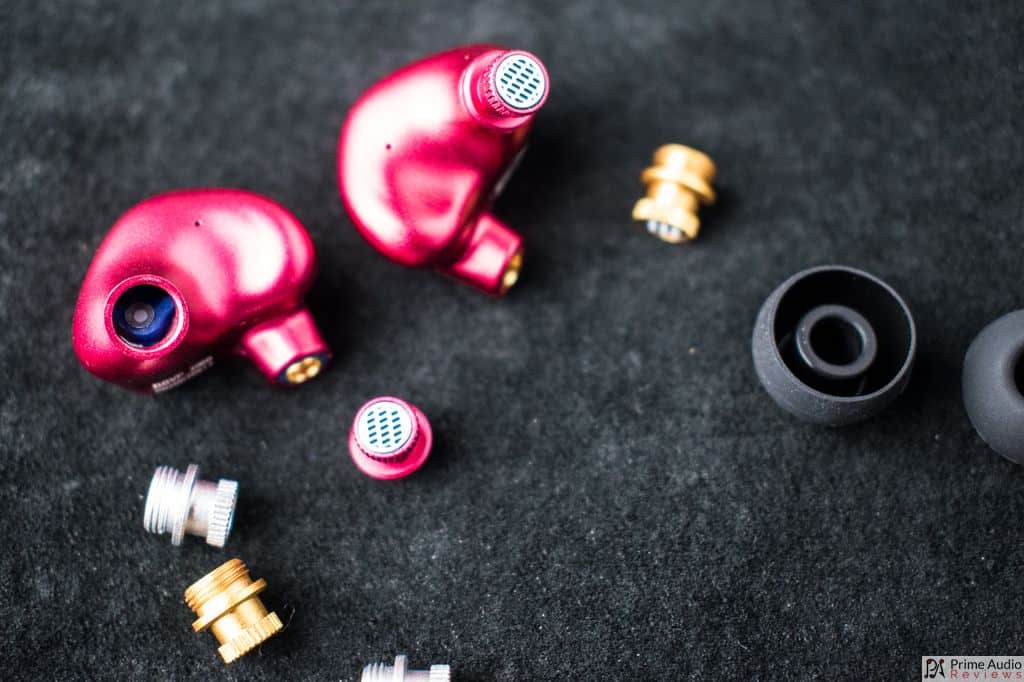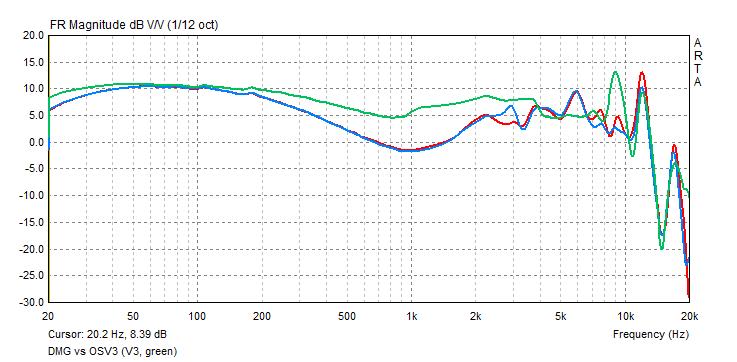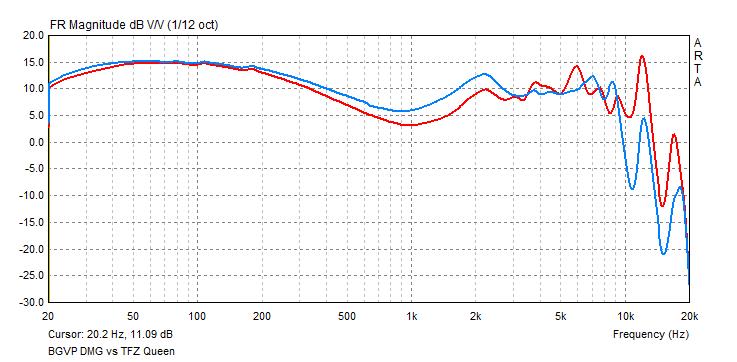Hey there PAR fam. Today we’re looking at the BGVP DMG Hybrid In-Ear Earphone. The DMG has 2 dynamic and 4 balanced armature drivers – a total of 6 drivers per side, a 4-way passive crossover and 3 sets of tuning filters. It sounds great, has a super nice build and the sexiest stock cable I’ve seen in this price bracket.
This is actually the third BGVP IEM that I have reviewed thus far. The first 2 didn’t garner much attention because quite frankly, they were average at best. When I say average I’m only talking about the sound. The build quality and design of both actually showed some original thinking and a lot of promise. And if you think that the name of this IEM is a mouthful, well just check out my previous reviews of the BGVP BKYT MRY6 and BGVP YSP04!
- Very ergonomic and comfortable fit
- Tuning filters for sound customization
- Solid accessory bundle (including a fantastic cable)
- Value for money
- Bass lacks definition
- Supplied eartips are all very small
Buy on:
Specifications
- Drivers: 4 Balance armature & 2 dynamic Coaxial composite
- Impedance: 18 Ohm
- Frequency response: 15Hz-45KHz
- Sensitivity: 108dB/mW@1KHz
- Cable length: 1.2M ±10%
This sample was provided for the purpose of an honest review. All observations and opinions here are my own based on my experience with the product.
Package and Accessories
The BGVP DMG comes in an average size box with a white cardboard sleeve. On the front of the sleeve is a glossy image of the earphone and on the back is an illustration of the IEM indicating how the filter system works.
Removing the outer sleeve reveals the box proper, a simple brown affair with the BGVP logo on the front. Inside we see the DMG earphones displayed in a smaller black box with windows and an additional box beneath that which holds the accessories. So what’s inside the box?
- BGVP earphones
- 1 detachable MMCX cable
- 3 pairs of blue silicone eartips
- 3 pairs of grey silicone eartips
- 1 pair of foam eartips
- 3 pairs of black silicone eartips
- 1 pair of silicone ear hooks
- Shirt clip
- 3 pairs of tuning filters
- User manual and warranty
As you can see there’s quite a lot provided in the package, with the exception of a carrying case. While the omission of a case is a shame I doubt anyone will feel shortchanged considering all the other stuff that is provided.
Build Quality and Design
Right out of the box you’ll notice the excellent build quality of the BGVP DMG earpieces. They’re made from a magnesium alloy and have a very smooth matte finish. The housings are the custom-shape type that fills the ears conchae.
The DMG feels solid in the hand – not heavy but it has enough heft to feel substantial and sturdy. There’s a pinhole vent near the base of the nozzle, presumably to feed some air to the dual dynamic drivers and prevent pressure build up inside the ears.

One of the DMG’s most interesting features is the filter system that allows you to customize the sound signature. The filters screw into the IEM shells and act as the nozzle. Changing the filters is really easy and the threads have been machined very smoothly. One thing to note is that the filters do not have a rubber washer so they may come loose over time but I have not experienced that myself during testing.

Comfort and Noise Isolation
Here’s another strong point of the DMG and undoubtedly another reason it has been so unanimously lauded. The smooth rounded edges and well-designed shape of the earpieces make this a very comfortable IEM. They simply pop into your ears without any fiddly adjusting and immediately feel right at home.
The preformed ear hooks do a great job of making the insertion feel completely natural and then they just seem to disappear and you’ll forget they’re even there at all. KZ (Knowledge Zenith) should really use something like this and ditch their awful memory wire on
I would say noise isolation is above average but still not as good as a fully sealed all BA in-ear monitor. You should be able to comfortably use the DMG anywhere, whether it be commuting or in an office environment etc. Noise leak is minimal so you don’t need to worry about disturbing others when you turn up your jam.
Cable
Provided in the box is a 5N Silver-plated OCC cable (I have the white version without a microphone). This is easily one of the nicest stock cables I’ve ever seen on a mid-tier IEM.
It’s a twisted type cable with a clear plastic sheath and is really supple so it sits very well and doesn’t have any kinks or memory. Above the Y-split the wires are not twisted but rather have a single strand for the Left and Right sides and here it is ridiculously silky smooth unlike any cable I’ve seen before.
Right, I’ll stop gushing now and get into the details. Starting at the top are the silver coloured MMCX connectors. Each connector has a coloured ring at the end (red for right and blue for left) for easy identification (I’m a huge fan of this btw).
Next, there are some preformed ear guides in a heat-shrink tubing that appears to be the same material as the cables outer sheath, meaning they’re really malleable and soft to the touch.
There’s a clear plastic chin slider above the cylindrical metal Y-split. The Y-split is small, lightweight and unobtrusive. Finally, the cable terminates in a metal L-shaped plug with clear rubber join and strain relief.
Sound
Gear used for testing includes the Shanling M0 and Sony NW-ZX300 for DAPs. The FiiO BTR3 was also used in conjunction with the 2 DAPs I just mentioned and my Android smartphone. On the desktop, I was using Tidal HiFi from my Windows PC with the tasty Topping DX7 performing DAC duties.
The BGVP DMG has an impedance of 18 Ohms and a sensitivity of 108dB. This means it’s very easy to drive and does not require any extra amplification and thus works fine straight out of a phone or low-powered DAP.
Filters
I’m just going to do a really quick rundown on the various tuning filters here because the differences between them are fairly minor. So, you get 3 pairs of filters: gold for enhanced bass, a neutral filter which is the same colour as the earphones (in my case red) and silver for some treble and vocals emphasis.
For the majority of my testing, I used the
Sound Summary

The BGVP DMG has outstanding technical ability for something at its price. I hear it as L-shaped with emphasis on the bass giving it a warm tonality. I’ll talk about that in a minute but it’s the mids and treble that impress me the most about this IEM.
The separation and space between instruments is crazy good and the DMG is a resolving beast that lays everything out on the table for your ears to digest. This is an earphone that has been tuned more for fun than tonal accuracy.
Bass
While some aspects of the bass are very good I find it to be the DMG’s weakest point. It’s a very thick bass with a slow decay that heavily impacts the overall tonality of the sound signature.
The mid-bass has a lot of impact followed by a slow decay that makes kick drums sound thick but hollow. It can be somewhat overbearing and cause bass fatigue but this depends a lot on each individual track.
When the DMG brings the sub-bass it really brings the sub-bass! I’m sure this is what it would feel like if you could stick your head inside a sub-woofer. The sub-bass is at a slightly more conservative level than the mid-bass and as a result, sounds more natural. It has excellent extension and is very well controlled to boot.
Mids
Although slightly recessed, the DMG’s midrange is truly impressive and this is where its technical strengths are really highlighted. Instruments and vocals are clear and articulate but the most striking feature is the mad separation. Midrange sounds float out of a pitch black void – it seems as though the DMG takes all the sounds and spreads them out.
It’s this trait that makes the mids a real treat with this IEM. Complex segments and tracks are dissected with ease and something that was like a solid wall of sound with a lesser IEM suddenly becomes a 3D soundscape that you can imagine navigating and moving through with the DMG.
The mids aren’t intimidated by the heavy-handed low frequencies either. The midrange remains clear and uncluttered regardless of how much bass is being pumped into the music, it really is impressive.
Vocals have good density and weight. Female vocals gain a slight vivacity but male voices aren’t neglected and get plenty of warmth and richness. Despite being pushed back behind the bass, the DMG’s midrange is exceptional.
Treble
This is another area where the DMG excels IMO. Its treble is light and airy with plenty of
Soundstage
The stage produced by the DMG is a bit larger than average but will be affected by the amount of bass present in the music. Where the DMG weaves its magic is in its separation and layering, allowing it to accurately position various elements within the stage. The stage gives a solid perception of depth which when added to the average width produces a proportionally rounded space.
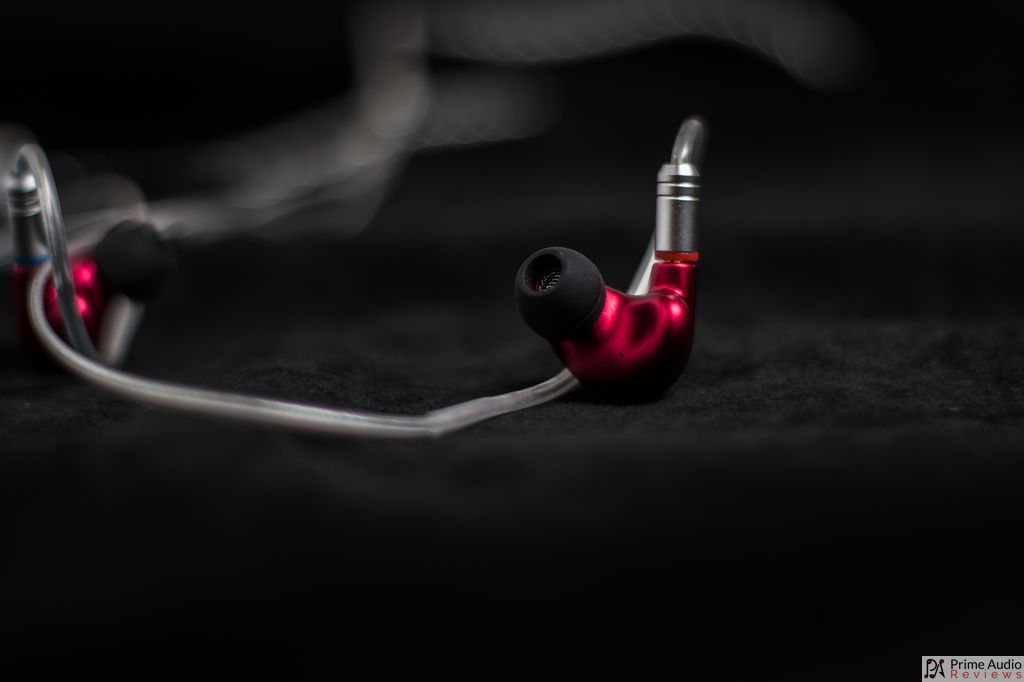
Comparisons
BGVP DMG vs HiFi Boy OS V3 ($159 USD)
The OS V3’s sub and mid-bass are more linear, while the DMG focuses more on mid-bass. The OS V3 has more definition and texture in its bass. Midrange is more recessed on the DMG and sits behind the bass. The OS V3 has a more balanced overall signature with the midrange much more in line with the bass.
The DMG has superior separation and is more resolving than the OS V3 and it seems to pick up every nuance effortlessly. Both male and female vocals are more engaging on the OS V3 due to their forwardness.
In the treble region these 2 earphones are quite similar but the DMG sounds a little bit sweeter here. The DMG treble has a real light airiness that doesn’t sacrifice any solidity.
Both IEMs have excellent build quality, even though the OS V3 is plastic it doesn’t feel any less premium. When it comes to accessories the DMG has everything but a case while the OS V3 throws in a case and very little else.
BGVP DMG vs TFZ Queen ($126 USD)
The TFZ Queen has a leaner and brighter tonality. It has a tighter and faster bass but can provide an equal amount of impact. Sub-bass on the Queen has a slightly faster rumble and similar control
The Queen’s midrange is leaner and more vivid. The DMG’s midrange is smoother overall but it is also more recessed. Again the DMG is much more resolving and handles complex passages with ease while the Queen can at times be subject to congestion.
Treble is drier on the Queen and doesn’t have the same lively energy or crispness of the DMG. Both IEMs have similarly impeccable build quality and solid accessory bundle.
Conclusion
With the DMG and subsequently the DM6, BGVP have really put themselves on the audio enthusiast’s radar. In a relatively short time, they’ve gone from relative obscurity and a few mediocre budget IEMs to having 2 of the hottest and most talked about
The BGVP DMG provides outstanding value for money and stands out as one of the best earphones currently available in the $100-$200 range. It’s no surprise then that this one is being added to our list of Best Universal IEMs.
[yasr_visitor_votes size=”medium”]





